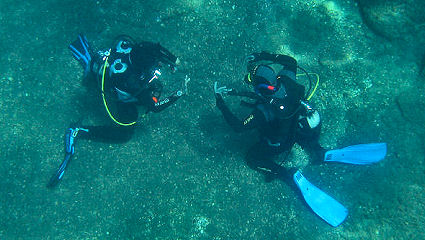| Underwater Wireless Communications |
 |
 |
 |
| Written by Harris Georgiou |
| Wednesday, 04 January 2012 00:00 |
|
Underwater communication has been a major technological issue since the start of autonomous (scuba) divers and deep-sea vehicles (DSVs). In recent years, wide-area sensor networks have enabled the close monitoring of environmental and extreme weather conditions, as well as emergency alerts in case of tsunamis and volcanic ash clouds. However, these networks usually require long-range communications and expensive satellite uplinks, in order to send data to a base station, since a fully-wired grid of hundreds of sensors over areas of thousands of square km is not a feasible solution. Sea water has very different signal propagation properties than open air. The major problem with electro-magnetic (RF) signals under water is that they fade very quickly with distance. A typical WiFi hotspot of some 100-200 mW transmission power becomes 10-20 times weaker, which practically makes it no more than a Bluetooth-like ultra-shortrange headset. These technological challenges have boosted research interest during the past decade or so. An interesting introductory text regarding these issues is one by D.Pompili and I.Akyildiz, "Overview of networking protocols for underwater wireless communications" (IEEE Communications Magazine, Feb.2009, vol.47, n.1, pp.97-102 - doi:10.1109/MCOM.2009.4752684), full text (pdf) available from Rutgers, The State Univ. of New Jersey. There is also a similar paper by Mari C. Domingo, "Overview of channel models for underwater wireless communication networks" (Physical Communication, vol.1, n.3, pp.163-182, Sept.2008- doi:10.1016/j.phycom.2008.09.001)(needs access to ScienceDirect.com). |
| Last Updated on Wednesday, 04 January 2012 19:33 |
























